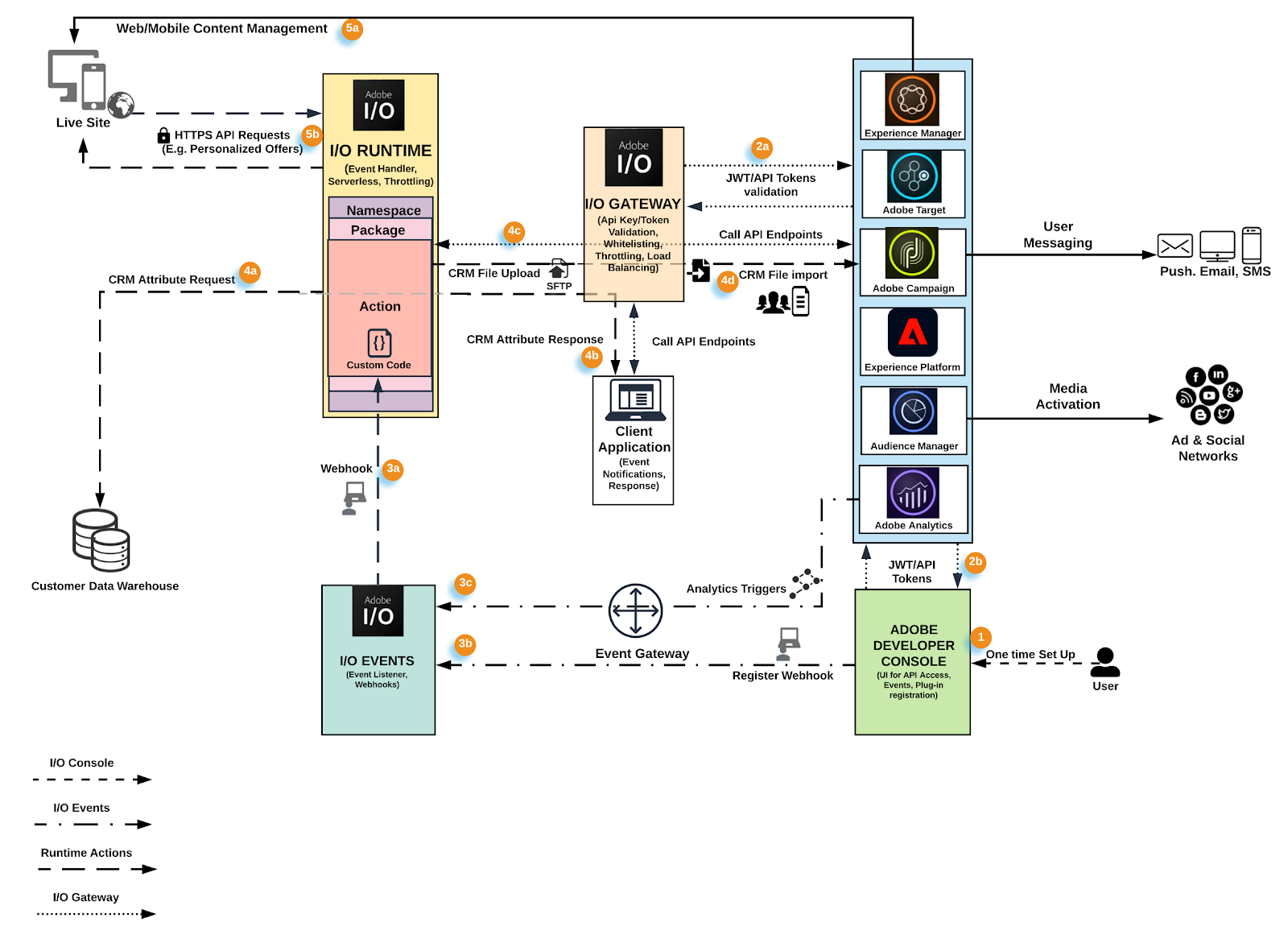
Abstract
APIs are a way for us to retrieve data from any service, be it a music streaming service, traffic navigation service, or a customer data platform such as Adobe Experience Platform. APIs can be used via serverless computing, an architecture model that allows developers to write and execute code without needing to provision any servers (hardware), which is costly. It’s a revolutionary concept; it is a far cry from the traditional hosted server technology and expedites the code delivery and execution process. There are lots of advantages to serverless that we won’t cover in this post (this article explains it in a bit more detail), but at a high level we can leverage serverless technology to address use cases around third-party integrations, batch file processing, and IoT devices to name a few.
In this article, we will take a deep dive into Adobe I/O, which is a one-stop shop for developers to extend the capabilities of the Adobe technology ecosystem by providing all the necessary tools and services to enable business use cases. We will review the Adobe I/O architecture along with its four components and outline Experience Cloud solution use cases that can be lit up using Adobe I/O.
Before we review the architecture, let’s review the role each Adobe I/O service plays in interacting with each of the Adobe Cloud solutions.
Read Full Blog
Q&A
Please use this thread to ask the related questions.
Kautuk Sahni
